- Home
- Ursula K. Le Guin
The Unreal and the Real - Vol 2 - Outer Space, Inner Lands Page 2
The Unreal and the Real - Vol 2 - Outer Space, Inner Lands Read online
Page 2
Most of the processions have reached the Green Fields by now. A marvelous smell of cooking goes forth from the red and blue tents of the provisioners. The faces of small children are amiably sticky; in the benign grey beard of a man a couple of crumbs of rich pastry are entangled. The youths and girls have mounted their horses and are beginning to group around the starting line of the course. An old woman, small, fat, and laughing, is passing out flowers from a basket, and tall young men wear her flowers in their shining hair. A child of nine or ten sits at the edge of the crowd, alone, playing on a wooden flute. People pause to listen, and they smile, but they do not speak to him, for he never ceases playing and never sees them, his dark eyes wholly rapt in the sweet, thin magic of the tune.
He finishes, and slowly lowers his hands holding the wooden flute.
As if that little private silence were the signal, all at once a trumpet sounds from the pavilion near the starting line: imperious, melancholy, piercing. The horses rear on their slender legs, and some of them neigh in answer. Sober-faced, the young riders stroke the horses’ necks and soothe them, whispering, “Quiet, quiet, there my beauty, my hope…” They begin to form in rank along the starting line. The crowds along the racecourse are like a field of grass and flowers in the wind. The Festival of Summer has begun.
Do you believe? Do you accept the festival, the city, the joy? No? Then let me describe one more thing.
In a basement under one of the beautiful public buildings of Omelas, or perhaps in the cellar of one of its spacious private homes, there is a room. It has one locked door, and no window. A little light seeps in dustily between cracks in the boards, secondhand from a cobwebbed window somewhere across the cellar. In one corner of the little room a couple of mops, with stiff, clotted, foul-smelling heads, stand near a rusty bucket. The floor is dirt, a little damp to the touch, as cellar dirt usually is. The room is about three paces long and two wide: a mere broom closet or disused tool room. In the room a child is sitting. It could be a boy or a girl. It looks about six, but actually is nearly ten. It is feeble-minded. Perhaps it was born defective, or perhaps it has become imbecile through fear, malnutrition, and neglect. It picks its nose and occasionally fumbles vaguely with its toes or genitals, as it sits hunched in the corner farthest from the bucket and the two mops. It is afraid of the mops. It finds them horrible. It shuts its eyes, but it knows the mops are still standing there; and the door is locked; and nobody will come. The door is always locked; and nobody ever comes, except that sometimes—the child has no understanding of time or interval—sometimes the door rattles terribly and opens, and a person, or several people, are there. One of them may come in and kick the child to make it stand up. The others never come close, but peer in at it with frightened, disgusted eyes. The food bowl and the water jug are hastily filled, the door is locked, the eyes disappear. The people at the door never say anything, but the child, who has not always lived in the tool room, and can remember sunlight and its mother’s voice, sometimes speaks. “I will be good,” it says. “Please let me out. I will be good!” They never answer. The child used to scream for help at night, and cry a good deal, but now it only makes a kind of whining, “eh-haa, eh-haa,” and it speaks less and less often: It is so thin there are no calves to its legs; its belly protrudes; it lives on a half-bowl of corn meal and grease a day. It is naked. Its buttocks and thighs are a mass of festered sores, as it sits in its own excrement continually.
They all know it is there, all the people of Omelas. Some of them have come to see it, others are content merely to know it is there. They all know that it has to be there. Some of them understand why, and some do not, but they all understand that their happiness, the beauty of their city, the tenderness of their friendships, the health of their children, the wisdom of their scholars, the skill of their makers, even the abundance of their harvest and the kindly weathers of their skies, depend wholly on this child’s abominable misery.
This is usually explained to children when they are between eight and twelve, whenever they seem capable of understanding; and most of those who come to see the child are young people, though often enough an adult comes, or comes back, to see the child. No matter how well the matter has been explained to them, these young spectators are always shocked and sickened at the sight. They feel disgust, which they had thought themselves superior to. They feel anger, outrage, impotence, despite all the explanations. They would like to do something for the child. But there is nothing they can do. If the child were brought up into the sunlight out of that vile place, if it were cleaned and fed and comforted, that would be a good thing, indeed; but if it were done, in that day and hour all the prosperity and beauty and delight of Omelas would wither and be destroyed. Those are the terms. To exchange all the goodness and grace of every life in Omelas for that single, small improvement: to throw away the happiness of thousands for the chance of the happiness of one: that would be to let guilt within the walls indeed.
The terms are strict and absolute; there may not even be a kind word spoken to the child.
Often the young people go home in tears, or in a tearless rage, when they have seen the child and faced this terrible paradox. They may brood over it for weeks or years. But as time goes on they begin to realize that even if the child could be released, it would not get much good of its freedom: a little vague pleasure of warmth and food, no doubt, but little more. It is too degraded and imbecile to know any real joy. It has been afraid too long ever to be free of fear. Its habits are too uncouth for it to respond to humane treatment. Indeed, after so long it would probably be wretched without walls about it to protect it, and darkness for its eyes, and its own excrement to sit in. Their tears at the bitter injustice dry when they begin to perceive the terrible justice of reality, and to accept it. Yet it is their tears and anger, the trying of their generosity and the acceptance of their helplessness, which are perhaps the true source of the splendor of their lives. Theirs is no vapid, irresponsible happiness. They know that they, like the child, are not free. They know compassion. It is the existence of the child, and their knowledge of its existence, that makes possible the nobility of their architecture, the poignancy of their music, the profundity of their science. It is because of the child that they are so gentle with children. They know that if the wretched one were not there snivelling in the dark, the other one, the flute-player, could make no joyful music as the young riders line up in their beauty for the race in the sunlight of the first morning of summer.
Now do you believe in them? Are they not more credible? But there is one more thing to tell, and this is quite incredible.
At times one of the adolescent girls or boys who go to see the child does not go home to weep or rage, does not, in fact, go home at all. Sometimes also a man or woman much older falls silent for a day or two, and then leaves home. These people go out into the street, and walk down the street alone. They keep walking, and walk straight out of the city of Omelas, through the beautiful gates. They keep walking across the farmlands of Omelas. Each one goes alone, youth or girl, man or woman. Night falls; the traveler must pass down village streets, between the houses with yellow-lit windows, and on out into the darkness of the fields. Each alone, they go west or north, towards the mountains. They go on. They leave Omelas, they walk ahead into the darkness, and they do not come back. The place they go towards is a place even less imaginable to most of us than the city of happiness. I cannot describe it at all. It is possible that it does not exist. But they seem to know where they are going, the ones who walk away from Omelas.
Semley’s Necklace
How can you tell the legend from the fact on these worlds that lie so many years away?—planets without names, called by their people simply The World, planets without history, where the past is the matter of myth, and a returning explorer finds his own doings of a few years back have become the gestures of a god. Unreason darkens that gap of time bridged by our lightspeed ships, and in the darkness uncertainty and disproportion grow like weed
s.
In trying to tell the story of a man, an ordinary League scientist, who went to such a nameless half-known world not many years ago, one feels like an archaeologist amid millennial ruins, now struggling through choked tangles of leaf, flower, branch and vine to the sudden bright geometry of a wheel or a polished cornerstone, and now entering some commonplace, sunlit doorway to find inside it the darkness, the impossible flicker of a flame, the glitter of a jewel, the half-glimpsed movement of a woman’s arm.
How can you tell fact from legend, truth from truth?
Through Rocannon’s story the jewel, the blue glitter seen briefly, returns. With it let us begin, here:
Galactic Area 8, No. 62: FOMALHAUT II.
High-Intelligence Life Forms: Species Contacted:
Species I.
A. Gdemiar (singular Gdem): Highly intelligent, fully hominoid nocturnal troglodytes, 120–135 cm. in height, light skin, dark head-hair. When contacted these cave-dwellers possessed a rigidly stratified oligarchic urban society modified by partial colonial telepathy, and a technologically oriented Early Steel culture. Technology enhanced to Industrial, Point C, during League Mission of 252–254. In 254 an Automatic Drive ship (to-from New South Georgia) was presented to oligarchs of the Kiriensea Area community. Status C-Prime.
B. Fiia (singular Fian): Highly intelligent, fully hominoid, diurnal, av. ca. 130 cm. in height, observed individuals generally light in skin and hair. Brief contacts indicated village and nomadic communal societies, partial colonial telepathy, also some indication of short-range TK. The race appears a-technological and evasive, with minimal and fluid culture-patterns. Currently untaxable. Status E-Query.
Species II.
Liuar (singular Liu): Highly intelligent, fully hominoid, diurnal, av. height above 170 cm., this species possesses a fortress/village, clan-descent society, a blocked technology (Bronze), and feudal-heroic culture. Note horizontal social cleavage into 2 pseudo-races: (a) Olgyior, “midmen,” light-skinned and dark-haired; (b) Angyar, “lords,” very tall, dark-skinned, yellow-haired—
“That’s her,” said Rocannon, looking up from the Abridged Handy Pocket Guide to Intelligent Life-forms at the very tall, dark-skinned, yellow-haired woman who stood halfway down the long museum hall. She stood still and erect, crowned with bright hair, gazing at something in a display case. Around her fidgeted four uneasy and unattractive dwarves.
“I didn’t know Fomalhaut II had all those people besides the trogs,” said Ketho, the curator.
“I didn’t either. There are even some ‘Unconfirmed’ species listed here, that they never contacted. Sounds like time for a more thorough survey mission to the place. Well, now at least we know what she is.”
“I wish there were some way of knowing who she is…”
She was of an ancient family, a descendant of the first kings of the Angyar, and for all her poverty her hair shone with the pure, steadfast gold of her inheritance. The little people, the Fiia, bowed when she passed them, even when she was a barefoot child running in the fields, the light and fiery comet of her hair brightening the troubled winds of Kirien.
She was still very young when Durhal of Hallan saw her, courted her, and carried her away from the ruined towers and windy halls of her childhood to his own high home. In Hallan on the mountainside there was no comfort either, though splendor endured. The windows were unglassed, the stone floors bare; in coldyear one might wake to see the night’s snow in long, low drifts beneath each window. Durhal’s bride stood with narrow bare feet on the snowy floor, braiding up the fire of her hair and laughing at her young husband in the silver mirror that hung in their room. That mirror, and his mother’s bridal-gown sewn with a thousand tiny crystals, were all his wealth. Some of his lesser kinfolk of Hallan still possessed wardrobes of brocaded clothing, furniture of gilded wood, silver harness for their steeds, armor and silver mounted swords, jewels and jewelry—and on these last Durhal’s bride looked enviously, glancing back at a gemmed coronet or a golden brooch even when the wearer of the ornament stood aside to let her pass, deferent to her birth and marriage-rank.
Fourth from the High Seat of Hallan Revel sat Durhal and his bride Semley, so close to Hallanlord that the old man often poured wine for Semley with his own hand, and spoke of hunting with his nephew and heir Durhal, looking on the young pair with a grim, unhopeful love. Hope came hard to the Angyar of Hallan and all the Western Lands, since the Starlords had appeared with their houses that leaped about on pillars of fire and their awful weapons that could level hills. They had interfered with all the old ways and wars, and though the sums were small there was terrible shame to the Angyar in having to pay a tax to them, a tribute for the Starlords’ war that was to be fought with some strange enemy, somewhere in the hollow places between the stars, at the end of years. “It will be your war too,” they said, but for a generation now the Angyar had sat in idle shame in their revel-halls, watching their double swords rust, their sons grow up without ever striking a blow in battle, their daughters marry poor men, even midmen, having no dowry of heroic loot to bring a noble husband. Hallanlord’s face was bleak when he watched the fair-haired couple and heard their laughter as they drank bitter wine and joked together in the cold, ruinous, resplendent fortress of their race.
Semley’s own face hardened when she looked down the hall and saw, in seats far below hers, even down among the halfbreeds and the midmen, against white skins and black hair, the gleam and flash of precious stones. She herself had brought nothing in dowry to her husband, not even a silver hairpin. The dress of a thousand crystals she had put away in a chest for the wedding-day of her daughter, if daughter it was to be.
It was, and they called her Haldre, and when the fuzz on her little brown skull grew longer it shone with steadfast gold, the inheritance of the lordly generations, the only gold she would ever possess…
Semley did not speak to her husband of her discontent. For all his gentleness to her, Durhal in his pride had only contempt for envy, for vain wishing, and she dreaded his contempt. But she spoke to Durhal’s sister Durossa.
“My family had a great treasure once,” she said. “It was a necklace all of gold, with the blue jewel set in the center—sapphire?”
Durossa shook her head, smiling, not sure of the name either. It was late in warmyear, as these Northern Angyar called the summer of the eight-hundred-day year, beginning the cycle of months anew at each equinox; to Semley it seemed an outlandish calendar, a midmannish reckoning. Her family was at an end, but it had been older and purer than the race of any of these northwestern marchlanders, who mixed too freely with the Olgyior. She sat with Durossa in the sunlight on a stone windowseat high up in the Great Tower, where the older woman’s apartment was. Widowed young, childless, Durossa had been given in second marriage to Hallanlord, who was her father’s brother. Since it was a kinmarriage and a second marriage on both sides she had not taken the title of Hallanlady, which Semley would some day bear; but she sat with the old lord in the High Seat and ruled with him his domains. Older than her brother Durhal, she was fond of his young wife, and delighted in the bright-haired baby Haldre.
“It was bought,” Semley went on, “with all the money my forebear Leynen got when he conquered the Southern Fiefs—all the money from a whole kingdom, think of it, for one jewel! Oh, it would outshine anything here in Hallan, surely, even those crystals like koob-eggs your cousin Issar wears. It was so beautiful they gave it a name of its own; they called it the Eye of the Sea. My great-grandmother wore it.”
“You never saw it?” the older woman asked lazily, gazing down at the green mountainslopes where long, long summer sent its hot and restless winds straying among the forests and whirling down white roads to the seacoast far away.
“It was lost before I was born.”
“The Starlords took if for tribute?”
“No, my father said it was stolen before the Starlords ever came to our realm. He wouldn’t talk of it, but there was an old midwoman full of tales
who always told me the Fiia would know where it was.”
“Ah, the Fiia I should like to see!” said Durossa. “They’re in so many songs and tales; why do they never come to the Western Lands?”
“Too high, too cold in winter, I think. They like the sunlight of the valleys of the south.”
“Are they like the Clayfolk?”
“Those I’ve never seen; they keep away from us in the south. Aren’t they white like midmen, and misformed? The Fiia are fair; they look like children, only thinner, and wiser. Oh, I wonder if they know where the necklace is, who stole it and where he hid it! Think, Durossa—if I could come into Hallan Revel and sit down by my husband with the wealth of a kingdom round my neck, and outshine the other women as he outshines all men!”
Durossa bent her head above the baby, who sat studying her own brown toes on a fur rug between her mother and aunt. “Semley is foolish,” she murmured to the baby; “Semley who shines like a falling star, Semley whose husband loves no gold but the gold of her hair…”
And Semley, looking out over the green slopes of summer toward the distant sea, was silent.
But when another coldyear had passed, and the Starlords had come again to collect their taxes for the war against the world’s end—this time using a couple of dwarfish Clayfolk as interpreters, and so leaving all the Angyar humiliated to the point of rebellion—and another warmyear too was gone, and Haldre had grown into a lovely, chattering child, Semley brought her one morning to Durossa’s sunlit room in the tower. Semley wore an old cloak of blue, and the hood covered her hair.
“Keep Haldre for me these few days, Durossa,” she said, quick and calm. “I’m going south to Kirien.”
“To see your father?”
“To find my inheritance. Your cousins of Harget Fief have been taunting Durhal. Even that halfbreed Parna can torment him, because Parna’s wife has a satin coverlet for her bed, and a diamond earring, and three gowns, the dough-faced black-haired trollop! while Durhal’s wife must patch her gown—”

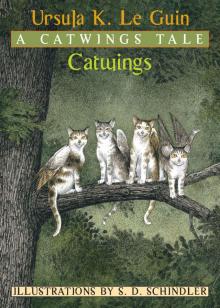 Catwings
Catwings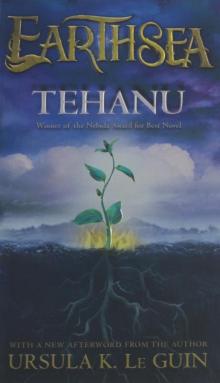 Tehanu
Tehanu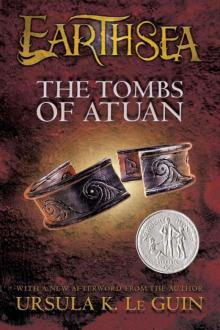 The Tombs of Atuan
The Tombs of Atuan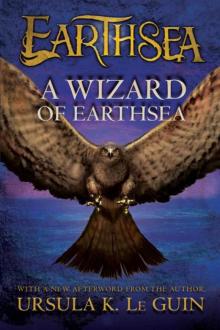 A Wizard of Earthsea
A Wizard of Earthsea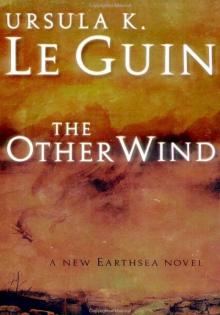 The Other Wind
The Other Wind Ursula K. Le Guin
Ursula K. Le Guin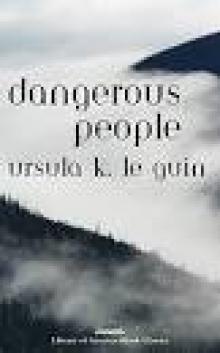 Dangerous People
Dangerous People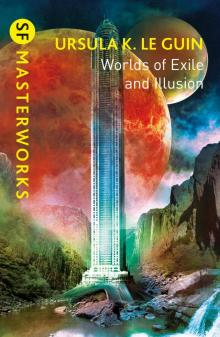 Worlds of Exile and Illusion: Rocannon's World, Planet of Exile, City of Illusions
Worlds of Exile and Illusion: Rocannon's World, Planet of Exile, City of Illusions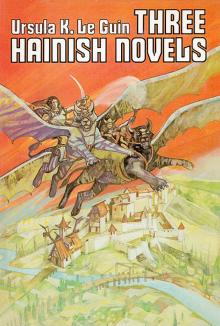 Three Hainish Novels
Three Hainish Novels The Left Hand Of Darkness (SF Masterworks)
The Left Hand Of Darkness (SF Masterworks)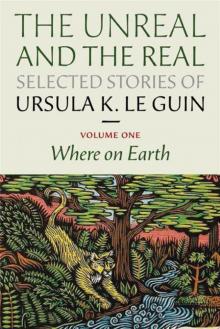 The Unreal and the Real - Vol 1 - Where On Earth
The Unreal and the Real - Vol 1 - Where On Earth The Visionary
The Visionary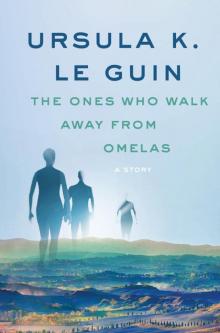 The Ones Who Walk Away from Omelas
The Ones Who Walk Away from Omelas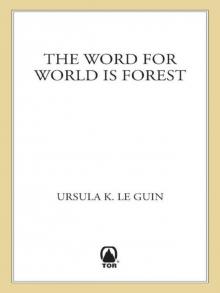 The Word for World is Forest
The Word for World is Forest Always Coming Home
Always Coming Home The Unreal and the Real - Vol 2 - Outer Space, Inner Lands
The Unreal and the Real - Vol 2 - Outer Space, Inner Lands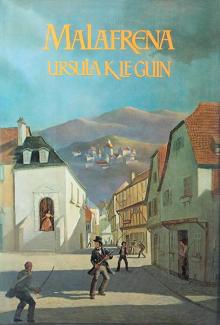 Malafrena
Malafrena The Lathe of Heaven
The Lathe of Heaven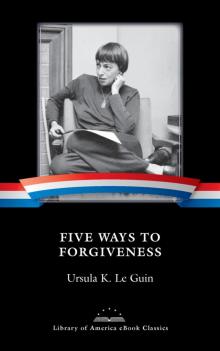 Five Ways to Forgiveness
Five Ways to Forgiveness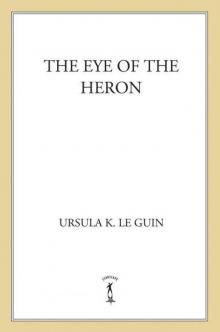 The Eye of the Heron
The Eye of the Heron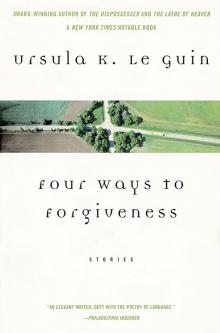 Four Ways to Forgiveness
Four Ways to Forgiveness Powers
Powers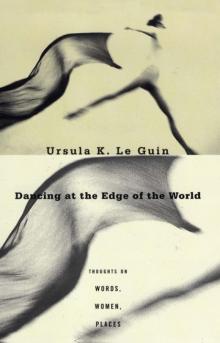 Dancing at the Edge of the World
Dancing at the Edge of the World Very Far Away from Anywhere Else
Very Far Away from Anywhere Else Voices aotws-2
Voices aotws-2 The New Atlantis
The New Atlantis The Unreal and the Real, Selected Stories of Ursula K. Le Guin Volume 1: Where on Earth
The Unreal and the Real, Selected Stories of Ursula K. Le Guin Volume 1: Where on Earth The Telling
The Telling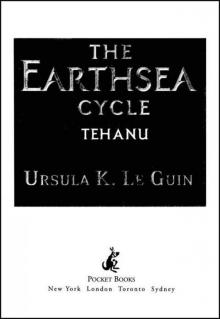 Tehanu (Earthsea Cycle)
Tehanu (Earthsea Cycle) Nine Lives twtq-9
Nine Lives twtq-9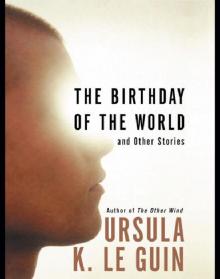 The Birthday of the World and Other Stories
The Birthday of the World and Other Stories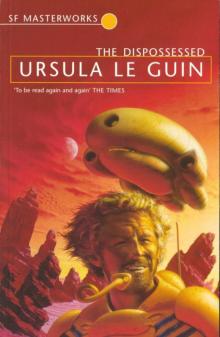 The Dispossessed
The Dispossessed Changing Planes
Changing Planes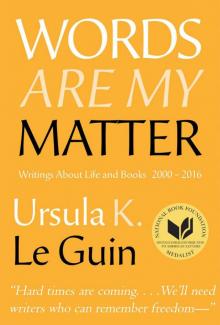 Words Are My Matter
Words Are My Matter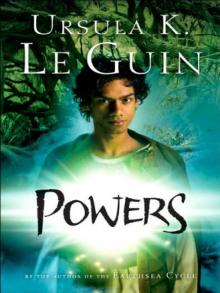 Powers aotws-3
Powers aotws-3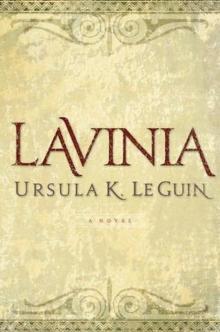 Lavinia
Lavinia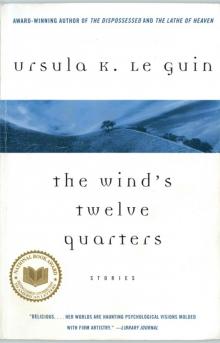 The Wind's Twelve Quarters
The Wind's Twelve Quarters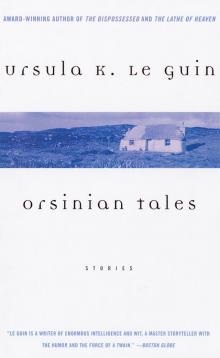 Orsinian Tales
Orsinian Tales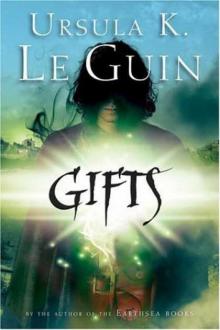 Gifts aotws-1
Gifts aotws-1 Coming of Age in Karhide
Coming of Age in Karhide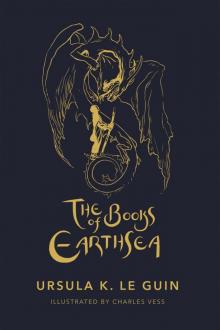 The Books of Earthsea: The Complete Illustrated Edition
The Books of Earthsea: The Complete Illustrated Edition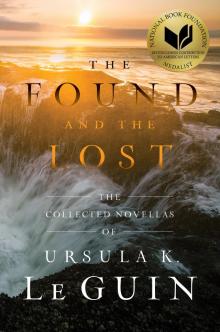 The Found and the Lost
The Found and the Lost No Time to Spare
No Time to Spare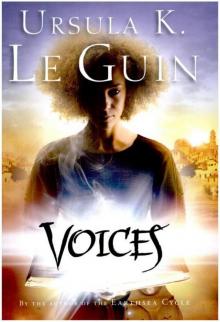 Voices
Voices The Wild Girls
The Wild Girls Old Music and the Slave Women
Old Music and the Slave Women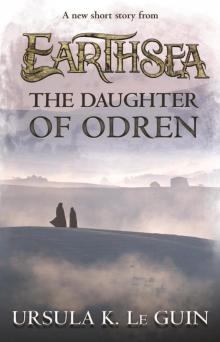 The Daughter of Odren
The Daughter of Odren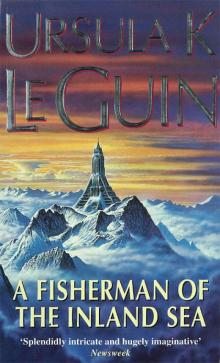 A Fisherman of the Inland Sea: Stories
A Fisherman of the Inland Sea: Stories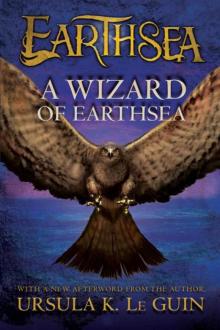 A Wizard of Earthsea (The Earthsea Cycle)
A Wizard of Earthsea (The Earthsea Cycle)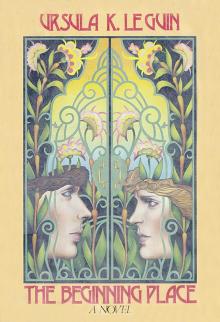 The Beginning Place
The Beginning Place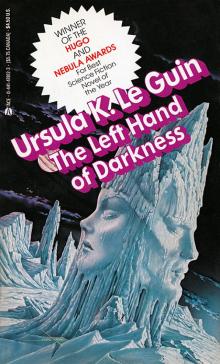 The Left Hand of Darkness
The Left Hand of Darkness The Farthest Shore (Earthsea Cycle)
The Farthest Shore (Earthsea Cycle) The Matter of Seggri botw-2
The Matter of Seggri botw-2